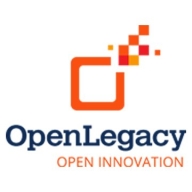

Microsoft Azure API Management and OpenLegacy compete in the API management category. Azure API Management seems to have the upper hand with its strong integration within Microsoft ecosystems and competitive pricing, while OpenLegacy provides unique legacy integration capabilities that some users find valuable despite its higher cost.
Features:Azure API Management provides API gateways, developer portals, and security features that integrate efficiently with Azure services. It also offers robust monitoring, access control, and subscription management for easy tracking and usage analysis. On the other hand, OpenLegacy focuses on legacy system integration, providing API generation without revamping existing systems. It enables seamless connections to older platforms, making it adaptable and open-source, which is beneficial for customization requirements.
Room for Improvement:Azure API Management could improve in offering more flexible multi-cloud integration outside the Microsoft environment, enhancing real-time customization features, and reducing complexity in large-scale deployments. OpenLegacy can work on simplifying its technology to make it more user-friendly, offering more streamlined support for non-legacy systems and improving documentation for better usability with mainstream cloud services.
Ease of Deployment and Customer Service:Azure API Management is straightforward to deploy within Microsoft environments, with comprehensive support resources and a broader service network. OpenLegacy, although complex due to legacy interactions, offers expert support and flexible deployment options tailored to customer needs, facilitating smoother legacy transitions.
Pricing and ROI:Azure API Management provides a clear pricing model with attractive ROI potential, especially for businesses using Azure services. OpenLegacy’s pricing mirrors its special legacy integration abilities, requiring a significant initial investment but promising high ROI by lessening modernization costs. Azure offers a lower entry cost, while OpenLegacy justifies its price with specific integration benefits.

Microsoft Azure API Management is essential for managing APIs, facilitating integration, and ensuring secure internal and external communication.
Organizations leverage Microsoft Azure API Management for seamless integration and effective API management. It supports microservices, legacy modernization, and platform orchestration in sectors like healthcare, telecom, and finance. Features such as developer portals and centralized libraries simplify usage. While it showcases strengths in hybrid cloud support and scalability, improvements are suggested in versioning and multi-tenancy.
What key features does it offer?Microsoft Azure API Management aids modernization across healthcare, telecom, and financial services by enabling legacy system updates and facilitating smooth platform orchestration.
OpenLegacy helps organizations quickly launch innovative digital services by extending their core back-end systems to the web, mobile and cloud in days or weeks versus months. Our microservice-enabled API integration and management software quickly reduces project backlog by automating and accelerating microservices and API creation, deployment, testing and management from core applications, mainframes and databases. Together, business and IT teams can quickly, easily and securely meet consumer, partner or employee demands for digital services without modernizing or replacing core systems, and without special programming skills or invasive changes to existing systems and architectures. OpenLegacy is designed for ongoing management of microservices APIs and is based on open standards, so our software plays nice with your current technology stack and supports agile, DevOps and continuous development. Learn why leading companies choose OpenLegacy at www.openlegacy.com.
We monitor all API Management reviews to prevent fraudulent reviews and keep review quality high. We do not post reviews by company employees or direct competitors. We validate each review for authenticity via cross-reference with LinkedIn, and personal follow-up with the reviewer when necessary.